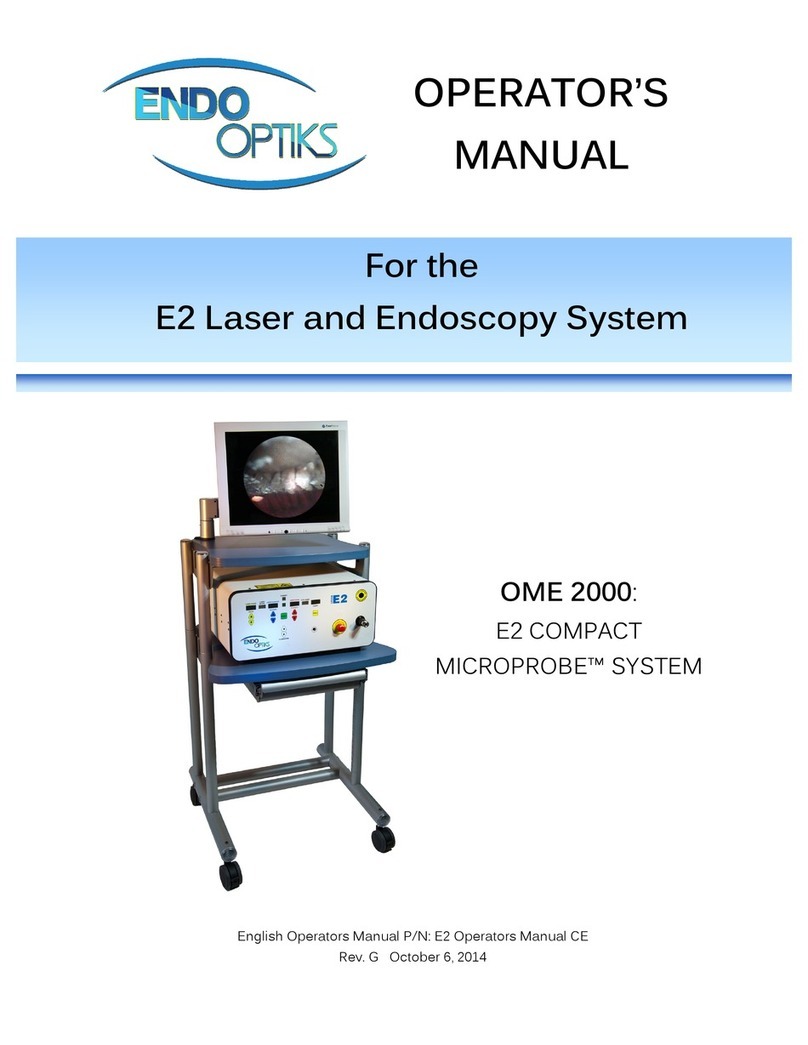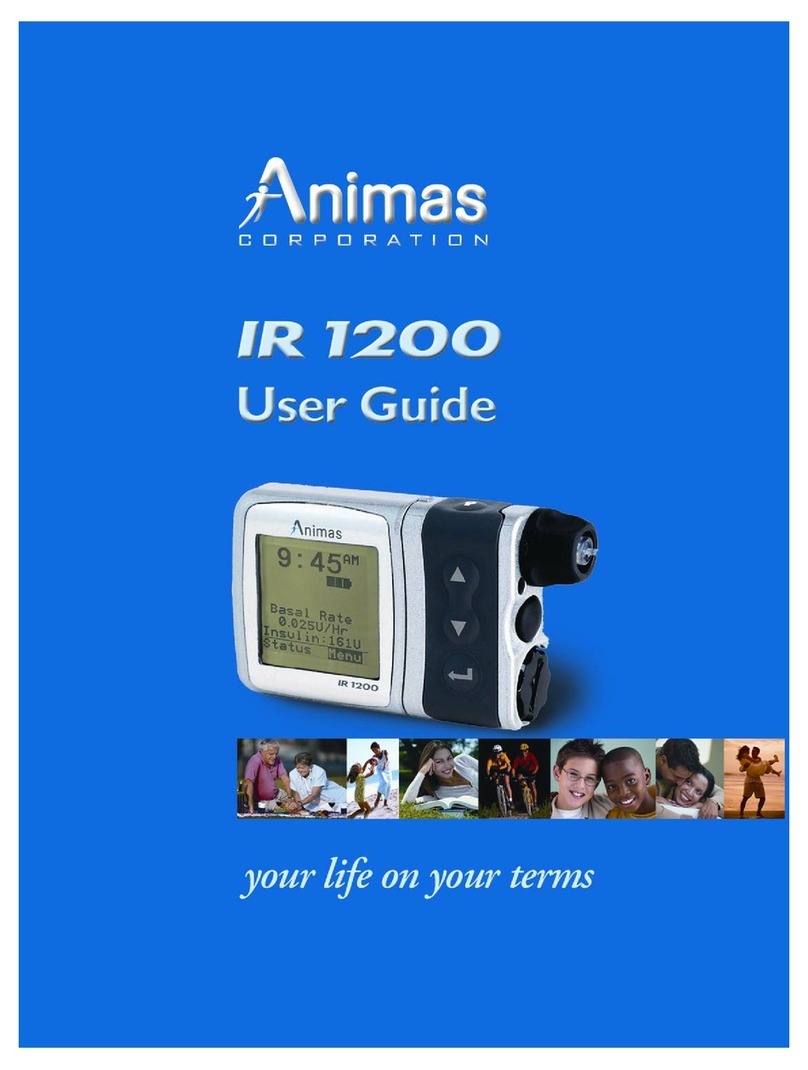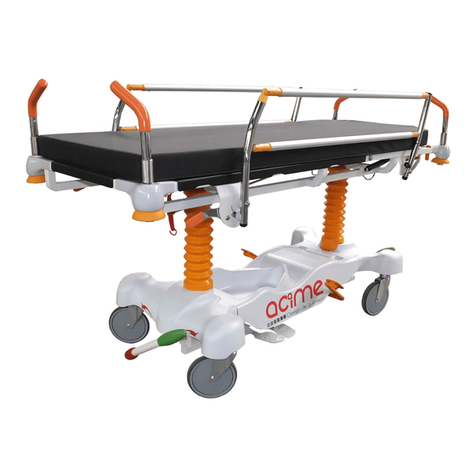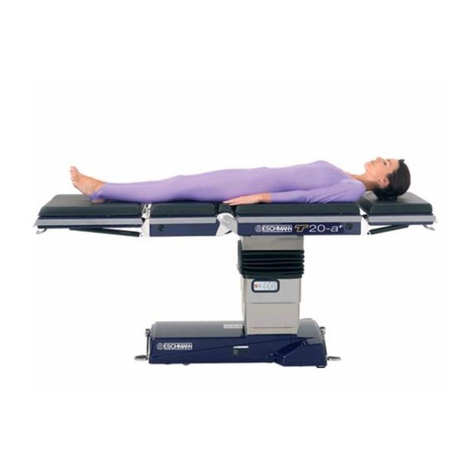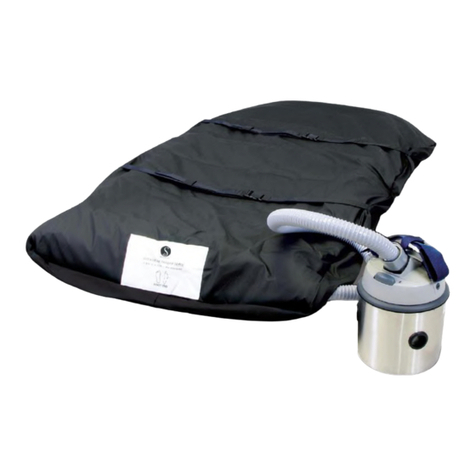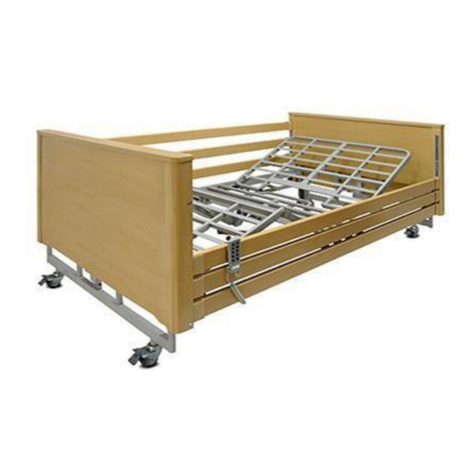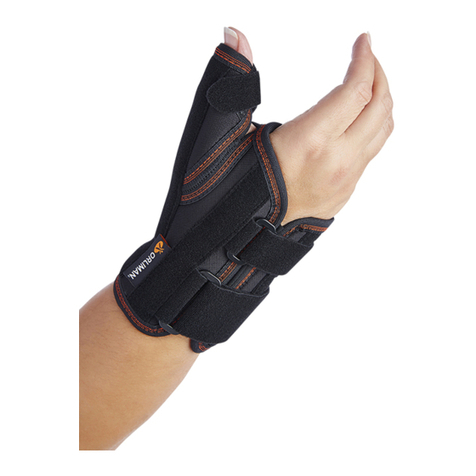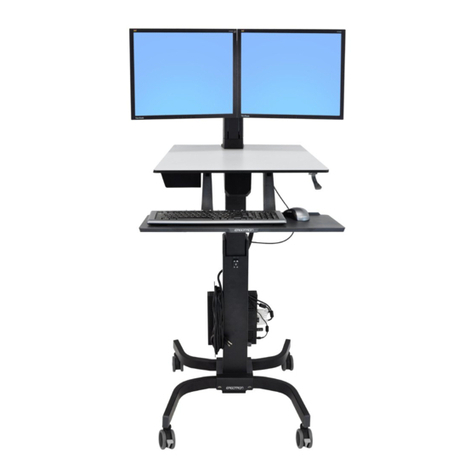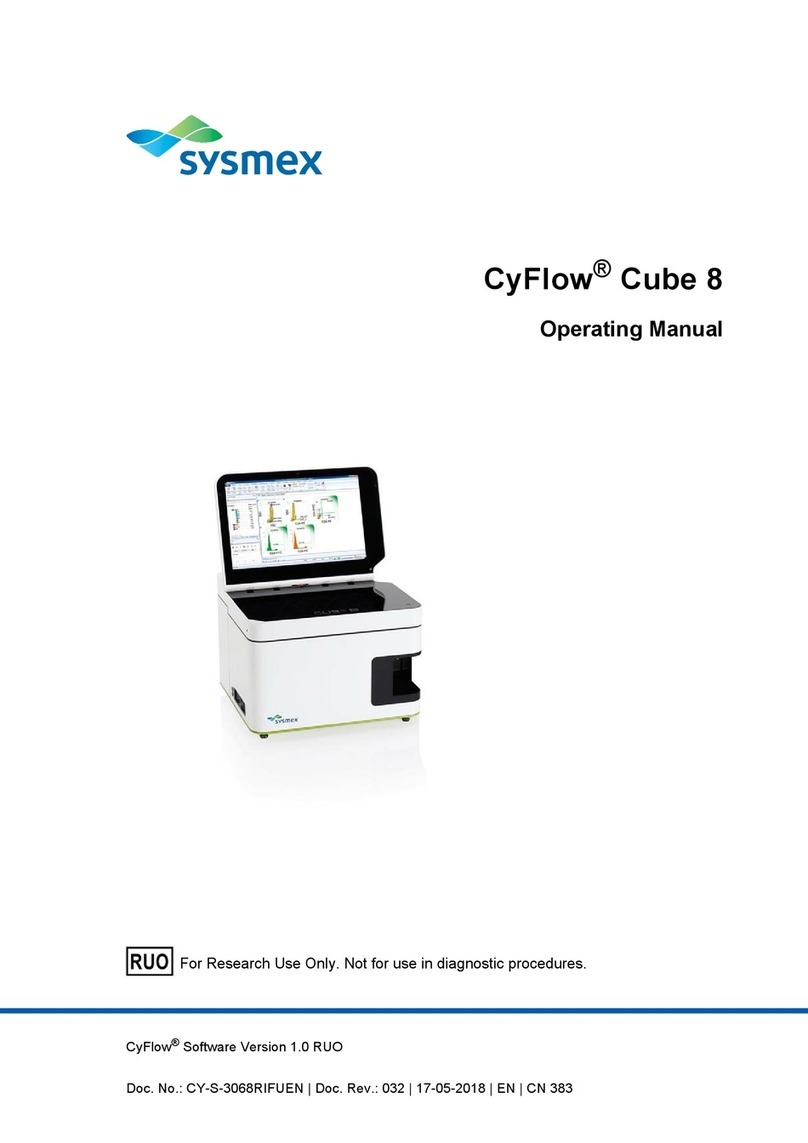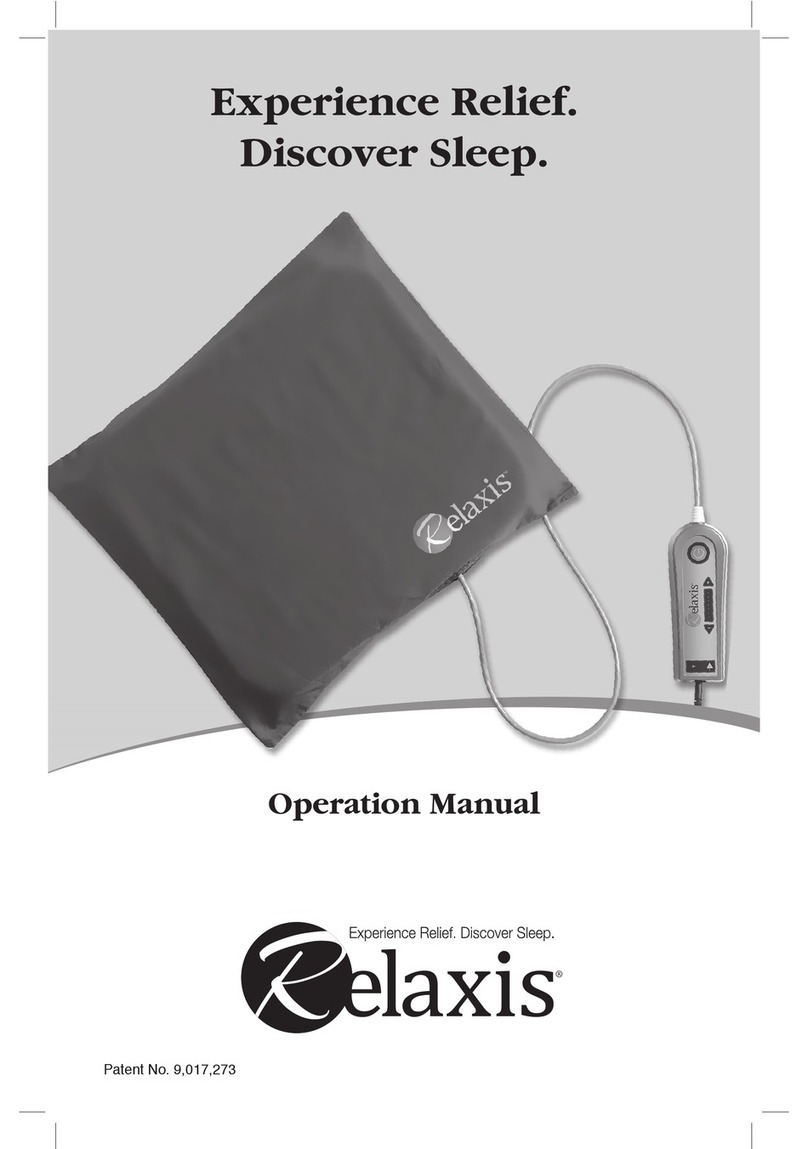Primedic HeartSave User manual

Masthead
Publisher
METRAX GmbH
Rheinwaldstr. 22
D-78628 Rottweil
Germany
Telephone: +49 (0) 741/257-0
Email: info.primedic@spacelabs.com
Web: www.primedic.com
Revision: B02
Date of issue: 09/2015
Proprietary note
METRAX GmbH reserves all rights to these operating instructions. These operating
instructions may not be duplicated or made accessible to third parties without the approval
of METRAX GmbH. The same applies to individual parts or excerpts of these operating
instructions.
Non-compliance gives grounds to a right to claim damages and can have consequences
under criminal law (refer to DIN 34).
We reserve the right to make amendments to these operating instructions.

Table of contents
III
Table of contents
1 Introduction HeartSave AED Trainer 4
1.1 Foreword 4
1.2 Validity 4
1.3 Intended use 4
1.4 Guarantee 4
1.5 Disclaimers 5
2 Description of device 6
2.1 Description of device details 6
2.2 Description of the accessories 9
2.2.1 SavePads Trainer Electrodes 9
2.2.2 SavePads Trainer Cable 9
2.2.3 Accessories 10
3 Preparatory measures before (initial) start-up 11
3.1 Unpacking 11
3.2 Inserting / Replacing the Batteries in the Power Module 11
3.3 Inserting / replacing the energy module 12
3.3.1 Inserting the power module 12
3.3.2 Removing the power module from the device 13
3.4 Inserting / replacing the SD card 13
3.5 Entering the Device Code for Remote Control 14
4 Using the device 15
4.1 Enable / Disable the PRIMEDIC™ HeartSave AED Trainer 15
4.1.1 Turn on the PRIMEDIC™ HeartSave AED Trainer 15
4.1.2 Turn off the PRIMEDIC™ HeartSave AED Trainer 15
4.2 Resuscitation Sequence 15
4.2.1 Selection of Resuscitation-Scenarios 15
4.2.2 Pediatric Mode 17
4.2.3 Conditions for the Start of the Analysis 18
4.2.4 Automatic start of analysis 18
4.2.5 Adapting the volume of the metronome 18
5 ERC/AHA Guideline 2010 19
5.1 Voice output of the device 19
5.1.1 Defibrillation necessary: 19
5.1.2 Defibrillation is not necessary: 19
5.2 Cardio pulmonary resuscitation 20
5.3 Message < Check electrodes > 20
6 Cleaning 21
7 Disposal 21
8 Technical Data 22
9 Warranty conditions 23
!
The PRIMEDIC™ HeartSave AED
Trainer is no active defibrillator and is
therefore not suitable for the therapy to
patients. !

Introduction HeartSave AED Trainer
4 / 24 23560 HeartSave AED Trainer / GB / B02 METRAX GmbH
1Introduction HeartSave AED Trainer
1.1 Foreword
Dear User,
You are preparing to face the task of learning to perform a competent training demonstration of
the safe use of
PRIMEDIC™ HeartSave AED Trainer
. The HeartSave AED Trainer you have
acquired is
not
a defibrillator, but is to be used solely for educational purposes and must not be
used on patients.
The training device provides a variety of training scenarios to provide the user with the
necessary knowledge of the HeartSave in combination with the ERC / ILCOR Guidelines 2010.
A PRIMEDIC ™ HeartSave AED Trainer is clearly identified by "coach" printed on both sides
on the side surfaces and on the nameplate. In addition, the HeartSave AED Trainer is
basically, after turning on, recognized as a training device with voice output
<
Attention
Training Device >
.
Keep these operating instructions near the device so that you consult any queries which may
arise.
For questions regarding the device or other PRIMEDIC ™ products, we are happy to help.
1.2 Validity
The descriptions in these operating instructions refer to the PRIMEDIC ™ Heart Save AED
Trainer made by METRAX GmbH.
1.3 Intended use
The PRIMEDIC™ HeartSave AED Trainer may only be used as described and under the
conditions detailed in these operating instructions.
Any use above or beyond this is not considered as intended use and can lead to personal
injury or damage to property.
1.4 Guarantee
The warranty period is 24 months and starts on the day of purchase. Please keep the invoice
as proof of purchase.
The general guarantee and warranty provisions of METRAX GmbH are applicable.
Any repairs or changes to the device may only be carried out by the manufacturer or by a
person or company authorised by the manufacturer.

Introduction HeartSave AED Trainer
METRAX
GmbH 23560 HeartSave AED Trainer / GB / B02 5 / 24
1.5 Disclaimers
Liability claims in the event of damages to people or property are excluded if they are based
on one or more of the following reasons:
•Using the device in a manner for which it was not intended.
•Improper use and maintenance of the device.
•Operating the device with the protective covers removed or when there is obvious
damage to cables and/or electrodes.
•Non-compliance with the instructions in these operating instructions with regard to
operation, maintenance and repair of the equipment.
•Using accessories and spare parts made by other manufacturers.
•Autonomous intervention, repairs or constructional changes to the device.
•Autonomous overrunning of the performance limits.
•Lack of monitoring parts that are subject to wear and tear.
•Treating patients without prior indication.

Description of device
6 / 24 23560 HeartSave AED Trainer / GB / B02 METRAX GmbH
2Description of device
2.1 Description of device details
Fig. 1: Front View (similar)
(1) Status display
(2) Strap to pull the cover off the device (with expiry date of SavePads)
(3) Carry handle
(4) Cover of the device
Fig. 2: Rear View (Similar to)
(1) Specification plate
(2) Fixing for wall mounting

Description of device
METRAX
GmbH 23560 HeartSave AED Trainer / GB / B02 7 / 24
Fig. 3: Bottom view (with power module)
(1) Release button power module
(2) Power module
Fig. 4: Front View (similar)
(1) Pediatric button
(2) Jack for electrode connectors
(3) Connector symbol with LED
(4) Electrode symbol with LED
(5) On/Off switch
(6) "Do not touch patient" symbol (lights up during ECG analysis)
(7) Loudspeaker
(8) Shock button (release button for defibrillation)
(9) Language change button (When a training device without function)

Description of device
8 / 24 23560 HeartSave AED Trainer / GB / B02 METRAX GmbH
Fig. 5: PRIMEDIC™ SavePads Trainer
(1) Cover of the device
(2) Utensil carrier
(3) SavePads Trainer with packaging
Fig. 6: Remote Control
(1)
Reduce volume
(6)
Scenario buttons
(2)
Impedance on/off
(7)
Changeover 15:2 / 30:2
(3)
Automatic impedance
(8)
Increase volume
(4)
Programming buttons for equipment
code
(9)
Scenario pause
(5)
Off button

Description of device
METRAX
GmbH 23560 HeartSave AED Trainer / GB / B02 9 / 24
2.2 Description of the accessories
2.2.1 SavePads Trainer Electrodes
.
Fig. 7: PRIMEDIC™ SavePads Trainer
(1) Training Electrode with Protective Film
(2) Mounting Tab
2.2.2 SavePads Trainer Cable
Fig. 8: PRIMEDIC™ Trainer cable
(1) Connector Side of the Device
(2) Adapter for SavePads Trainer Electrodes

Description of device
10 / 24 23560 HeartSave AED Trainer / GB / B02 METRAX GmbH
Note
Additionally added to the PRIMEDIC ™ Heart AED are nitrile gloves, a razor, a
ventilation cloth and a pair of scissors.
2.2.3 Accessories
•PRIMEDIC™ Trainer Energy Module DD / AS; Order No.: 96696
•PRIMEDIC™ TrainerCable AS/DD for trainer electrodes; Order No.: 97185
•PRIMEDIC™ SavePads Trainer Electrodes; Order No.: 96551 (50 pairs)
•PRIMEDIC™ SavePads Trainer Electrodes re-usable (1 pair),
Order No.: 97350
•PRIMEDIC™ Remote Control AED Trainer DD, AS and ONE, Order No.: 97614

Preparatory measures before (initial) start-up
METRAX
GmbH 23560 HeartSave AED Trainer / GB / B02 11 / 24
3Preparatory measures before (initial) start-up
3.1 Unpacking
After delivery, first of all check the packaging and the device for transport damage.
If you notice any damage to the device, immediately contact your transport company, dealer or
directly contact technical services at METRAX GmbH, stating the serial number and describing
the damage to the device.
Convince yourself that the scope of delivery is complete in accordance with the enclosed
delivery note.
Scope of delivery:
•HeartSave AED Trainer
•Power Module for HeartSave Trainer DD/AS
•SD-Card
•Operating instructions
•SavePads Training Electrodes ( 5 Pair)
•SavePads Training Cable
•Remote Control Trainer DD/AS/ONE
3.2 Inserting / Replacing the Batteries in the Power Module
The PRIMEDIC ™ Heart Save AED Trainer can be used with commercially available alkaline
batteries or AA batteries.
Before the first use of the PRIMEDIC ™ Heart Save AED Trainer you must first insert the
batteries / rechargeable batteries in the battery compartment.
Fig. 9: Power Module, Closed
The lid of the power module is closed by three Phillips screws (1, 2, 3).

Preparatory measures before (initial) start-up
12 / 24 23560 HeartSave AED Trainer / GB / B02 METRAX GmbH
Fig. 10: Power Module Open
The six batteries / rechargeable batteries are inserted into the lower tray. Pay attention
to the correct polarity!
3.3 Inserting / replacing the energy module
3.3.1 Inserting the power module
Fig. 11: Removing the power module
Procedure:
Lay the device on its back.
Push the (new) battery (1) in the direction of the arrow (3) into the device until it
reaches its end position as shown in the diagram.
Then press the battery in the direction of the arrow (4) into the power module slot
until the release button (2) locks the power module tongue securely into position.
Press the battery completely into the device until you hear the "click" when it slots
into place and the battery
is flush with the outside edge of the device.
After this, the device will carry out a self-test and is ready to use.

Preparatory measures before (initial) start-up
METRAX
GmbH 23560 HeartSave AED Trainer / GB / B02 13 / 24
3.3.2 Removing the power module from the device
Fig. 12: Removing the battery
Procedure:
Lay the device on its back.
Press the release button (2) far to the right as far as the power module tab is
unlocked and the power module (1) snaps out from the bay.
Twist the power module slightly in the direction of the arrow (4) and then pull it in the
direction of the arrow (3) out of the device.
3.4 Inserting / replacing the SD card
Fig. 13: Inserting / replacing the SD-card
To remove or change to the SD card, you must first remove the power module.
Procedure:
Insert the SD card into the card slot.
Note
Make sure that the contacts on the SD card show upwards!

Preparatory measures before (initial) start-up
14 / 24 23560 HeartSave AED Trainer / GB / B02 METRAX GmbH
Note
The training device starts only with SD card inserted. If it is not loaded, after
turning on all LEDs will light up.
3.5 Entering the Device Code for Remote Control
For the operation of the remote control, 2 batteries AAA size are needed. Please note that
after each battery change the device code of the remote control must be re-entered.
Push and hold the "SET" button
Press the "TV" - button until the red LED lights up permanently.
Release both buttons again
Enter "1 6 0".
Following this the red LED goes out and the remote control is ready for operation.
Fig. 14: Remote Control – Installing the Batteries
Battery

Using the device
METRAX
GmbH 23560 HeartSave AED Trainer / GB / B02 15 / 24
4Using the device
To operate the PRIMEDIC ™ HeartSave AED trainer the remote control is required.
4.1 Enable / Disable the PRIMEDIC™ HeartSave AED Trainer
4.1.1 Turn on the PRIMEDIC™ HeartSave AED Trainer
The device is automatically activated by removing its cover. If no device cover is used or if the
unit does not turn on automatically, turn it on by pressing the On / Off button.
Standby is confirmed by a beep. It is important to ensure that the loudspeaker is working.
4.1.2 Turn off the PRIMEDIC™ HeartSave AED Trainer
The PRIMEDIC ™ Heart AED Trainer can be turned off in several ways:
•By pressing the on/off button for approx. 3 seconds. A warning beep will sound
simultaneously. This time has been chosen to avoid it being switched off
accidentally.
•By pressing the "power button" on the remote control
4.2 Resuscitation Sequence
4.2.1 Selection of Resuscitation-Scenarios
The PRIMEDIC ™ Heart Save AED Trainer offers various so-called resuscitation scenarios
that will help you to realize different resuscitation procedures during training.
By pressing the keys 1-6 you can switch back and forth between several scenarios. The
selected scenario is announced by corresponding beeps and starts automatically. If a scenario
is not selected after the power-on tone, the trainer starts with scenario 1
The unit automatically starts in adult mode.
Press the Pediatric Button to enter Pediatric Mode.
The selected mode is signalized via the Voice Output
<
Adult Mode >
or
<
Pediatric Mode >
and
the LED of the Pediatric Button.

Using the device
16 / 24 23560 HeartSave AED Trainer / GB / B02 METRAX GmbH
The following pre-programmed scenarios are available:
# Symbol Description Resuscitation Sequence
1 ∼Begin resuscitation (BLS)
1 Defibrillation Required
Not requiring defibrillation
rhythm
Begin resuscitation
Analyse, Shock required
2 min CPR*
Analyse, No shock required
2 ∼Begin resuscitation (BLS)
2 Defibrillations needed
Not requiring defibrillation
rhythm
Begin resuscitation
Analyse, Shock required
2 min CPR
Analyse, Shock required
2 min CPR
Analyse, No shock required
3 ∼Begin resuscitation (BLS)
3 Defibrillations needed
Not requiring defibrillation
rhythm
Begin resuscitation
Analyse, Shock required
2 min CPR
Analyse, Shock required
2 min CPR
Analyse, Shock required
2 min CPR
Analyse, No shock required
4 ∼Begin resuscitation (BLS)
4 Defibrillations needed
Not requiring defibrillation
rhythm
Begin resuscitation
Analyse, Shock required
2 min CPR
Analyse, Shock required
2 min CPR
Analyse, Shock required
2 min CPR
Analyse, Shock required
2 min CPR
Analyse, No shock required
5 ∼∼∼Begin resuscitation (BLS)
1 Defibrillation Required
Not requiring defibrillation
rhythm
2 Defibrillations needed
Not requiring defibrillation
rhythm
2 Defibrillations needed
Not requiring defibrillation
Begin resuscitation
Analyse, Shock required
2 min CPR
Analyse, No shock required
2 min CPR
Analyse, Shock required
2 min CPR
Analyse, Shock required

Using the device
METRAX
GmbH 23560 HeartSave AED Trainer / GB / B02 17 / 24
# Symbol Description Resuscitation Sequence
rhythm
2 min CPR
Analyse, No shock required
2 min CPR
Analyse, Shock required
2 min CPR
Analyse, Shock required
2 min CPR
Analyse, No shock required
6 Patient with
Asystole
Begin resuscitation (BLS)
Not requiring defibrillation
rhythm
Begin resuscitation
Analyse, No Shock required
* CPR (Cardio Pulmonary Resuscitation) = HLW (Cardiopulmonary resuscitation)
Note
The scenario can be interrupted by pressing the key on the keyboard. When
pressing the key again, the scenario is continued at the same place.
4.2.2 Pediatric Mode
In barrel mode, there is the possibility to adjust the relationship between cardiac massage and
ventilation to 30:2 or 15:2.
Changing the ratio between cardiac massage and ventilation:
Pressing the 9 button (7) changes from 15:2 / 30:2
Note
Ratio 30:2 2 x Beep
Ratio 15:2 1 x Beep
The ratio can be changed for Pediatric Mode!
The voice announcement 30 x chest compressions is then replaced by 15 x
chest compressions.
The setting is stored until the power module is removed, the next time the
trainer uses the last setting.
Note
During the analysis is not possible to change the mode
Note
The setting is saved until the energy module is removed.

Using the device
18 / 24 23560 HeartSave AED Trainer / GB / B02 METRAX GmbH
Note
The Voice Announcement
<
Chest compressions >
during the energy charging
is omitted in Pediatric Mode.
4.2.3 Conditions for the Start of the Analysis
By using training pads on electrically non-conductive resuscitation dolls the PRIMEDIC ™
Heart Save AED Trainer cannot automatically start the analysis, when the user electrodes are
adhered to the dolls. Therefore, the instructor must simulate the electrode contact during
training.
Press the button on the remote control (impedance on/off) to simulate the first
electrode contact.
The device then automatically starts the analysis, provided the training cord is plugged in.
Pushing the button again switches patient impedance off again. This simulates the
electrodes falling off.
4.2.4 Automatic start of analysis
You can set the HeartSave AED Trainer in such a way that the analysis starts automatically. In
this case the patient impedance must not be added using the remote control.
Proceed as follows to activate this function:
Push the button 7 (3) on the remote control. If the automatic patient impedance is
activated, the HeartSave AED Trainer emits a rising tone sequence.
Proceed as follows to de-activate this function:
Push the button 7 (3) on the remote control. If the automatic patient impedance is de-
activated, the HeartSave AED Trainer emits a falling tone sequence.
Note
The setting is saved until the energy module is removed.
4.2.5 Adapting the volume of the metronome
You can adapt the volume of the metronome by pushing the button (1) or (8) during the
metronome phase. The volume of the voice messages is not affected by this.
Note
The setting is saved until the energy module is removed.

ERC/AHA Guideline 2010
METRAX
GmbH 23560 HeartSave AED Trainer / GB / B02 19 / 24
5ERC/AHA Guideline 2010
5.1 Voice output of the device
After the self-test has been successfully performed by the device, the following BLS-language
instruction (BLS = Basic Life Support) is issued:
<Adult mode>
< Call emergency services >
After that the following voice prompt is issued for a period of
one minute
:
< Apply electrodes one after the other to patient's bare chest >
If the Electrode plug is not yet inserted in the device, the audio prompt will be issued for
one
minute
:
< Apply electrodes one after the other to patient's bare chest >
< Plug in electrode cable >
If, up to this point the device does not detect any patient impedance, because the button on
the remote is not pressed yet, there are instructions for
one
cycle for cardiopulmonary
resuscitation (CPR):
< Give 30 chest compressions >
< Give 2 rescue breaths >
Afterwards the device will give instructions to attach the electrodes for maximum one minute.
This process is continued until the device, a first electrode pad (corresponding to the actual
case of a valid patient impedance) is signalled. By pressing the button on the remote
control.
< Analysing rhythm, Do not touch the patient >
5.1.1 Defibrillation necessary:
< Shock advised >
< chest compressions > (voice message omitted in Pediatric Mode)
< Stand clear of patient >
< Press lit shock button now >
5.1.2 Defibrillation is not necessary:
< No shock advised >

ERC/AHA Guideline 2010
20 / 24 23560 HeartSave AED Trainer / GB / B02 METRAX GmbH
5.2 Cardio pulmonary resuscitation
After the analysis or shock, application the device requests cardio pulmonary resuscitation.
This consists of
five (seven)
CPR cycles consisting of 30 chest compressions and two breaths.
The necessary actions will be announced by corresponding voice messages
in the first
cycle:
< Cardio pulmonary resuscitation >
< Give 30 chest compressions > (< Give 15 chest compressions >)
< Give 2 rescue breaths >
After the spoken message, 30 bleeps will follow during the chest compressions at the
recommended frequency of 100 compressions / minute. The rescue breaths are also
supported by an appropriate sound signal. From the second to fifth CPR cycle, only these
sound signals are emitted.
5.3 Message < Check electrodes >
The instructor can simulate the waste of an electrode by pressing the button on the remote
control.
In this case, the device repeats the following voice messages:
< Check electrodes >
< Apply electrodes one after the other to patient's bare chest >
If the plug on the PRIMEDIC™ SavePads Trainer has not been inserted in the unit, the
following additional instruction appears
< Plug in electrode cable >
These voice instructions to be repeated for the duration of one minute. If the device has not re-
signalled a good electrode contact before this time, there are instructions for five (seven)
cycles for cardiopulmonary resuscitation:
< Give 30 chest compressions > (< Give 15 chest compressions >)
< Give 2 rescue breaths >
Afterwards, the device will once again give instructions to attach the electrodes for a maximum
period of one minute. This process is continued until the device signals a good electrode
contact and begins the rhythm analysis.
Table of contents
Other Primedic Medical Equipment manuals
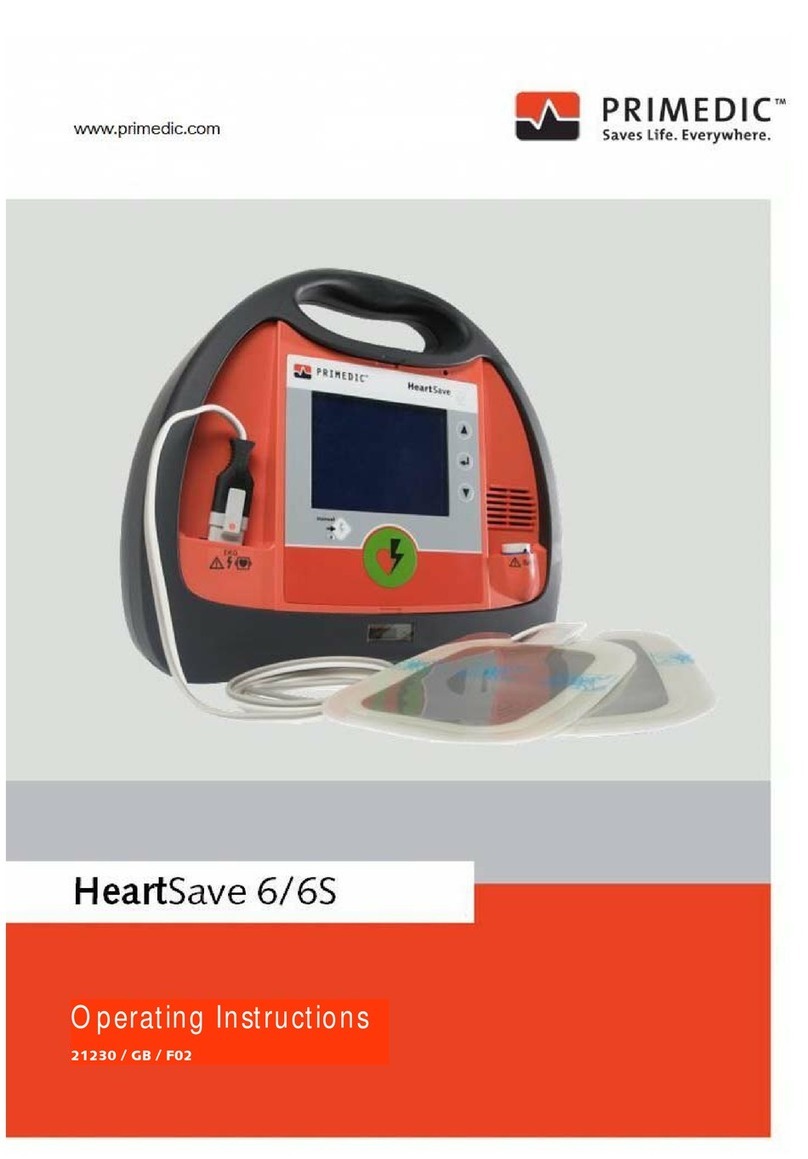
Primedic
Primedic HeartSave 6 User manual
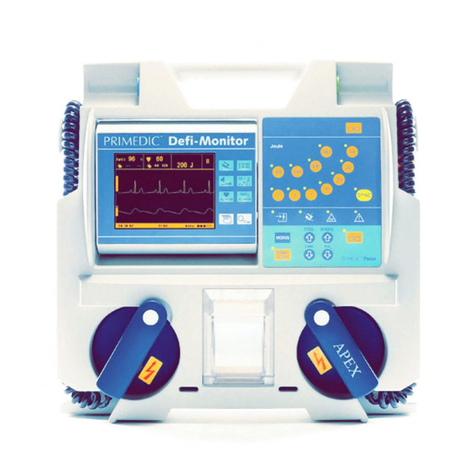
Primedic
Primedic Defi-Monitor ECO 1 User manual
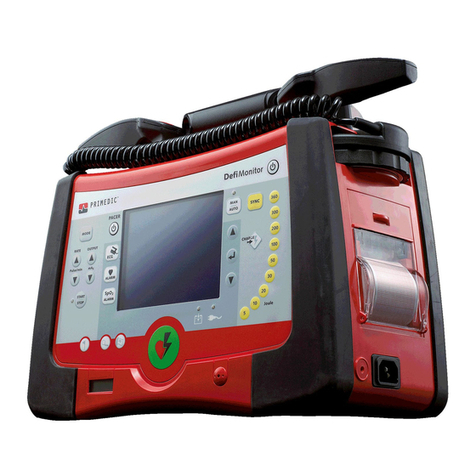
Primedic
Primedic DefiMonitor XD Series User manual
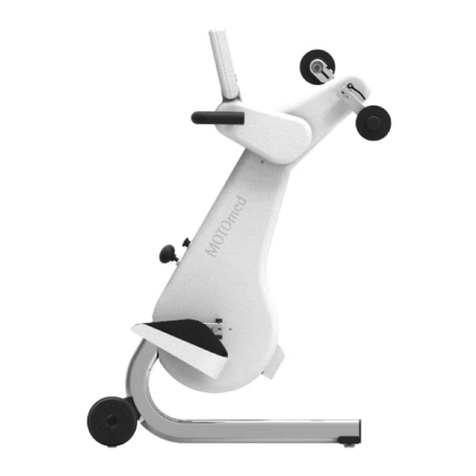
Primedic
Primedic RECK MOTOmed loop User manual
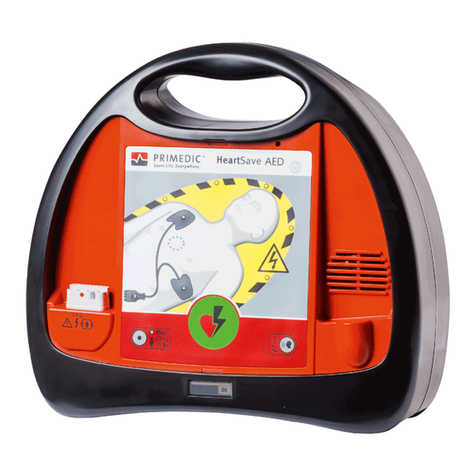
Primedic
Primedic HeartSave AED User manual
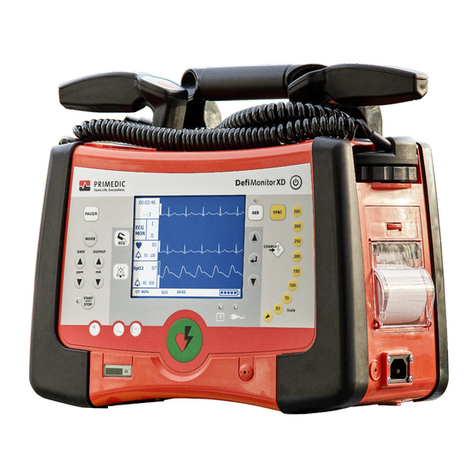
Primedic
Primedic DefiMonitor XD User manual

Primedic
Primedic DefiMonitor XD User manual
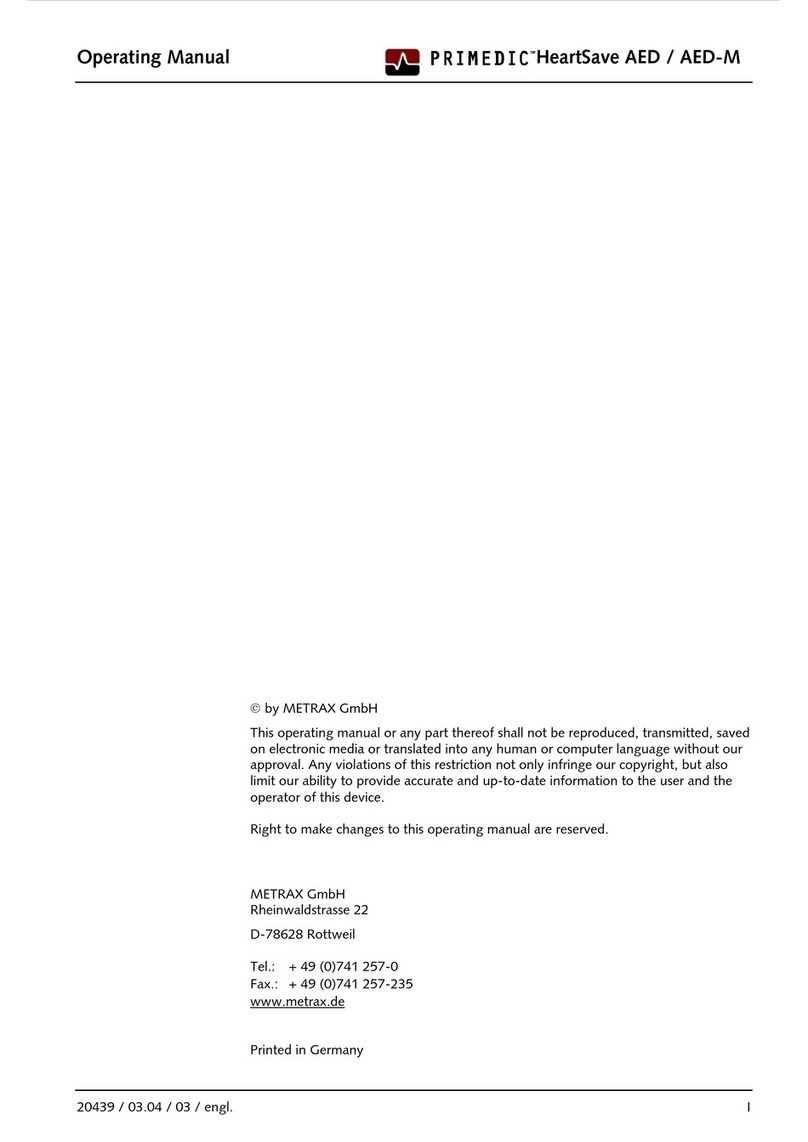
Primedic
Primedic HeartSave AED User manual
Popular Medical Equipment manuals by other brands
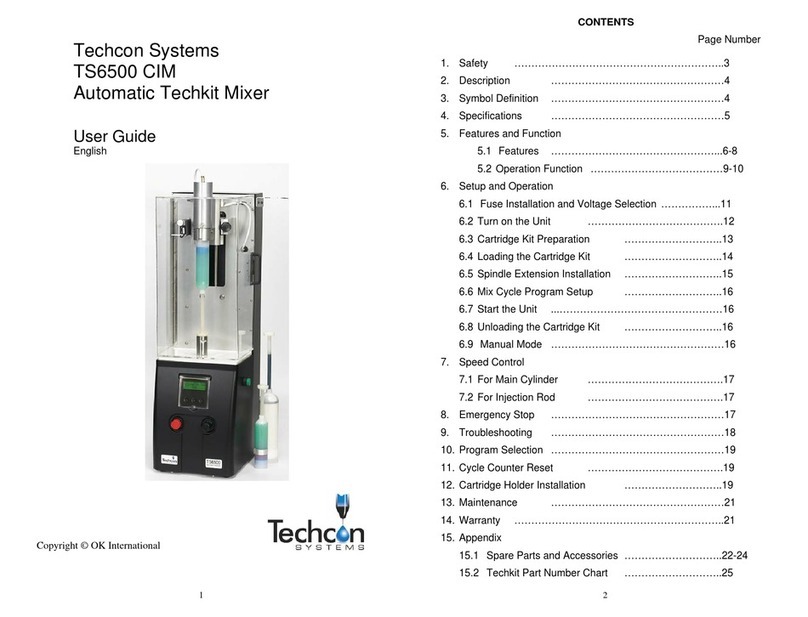
TECHCON SYSTEMS
TECHCON SYSTEMS TS6500 user guide
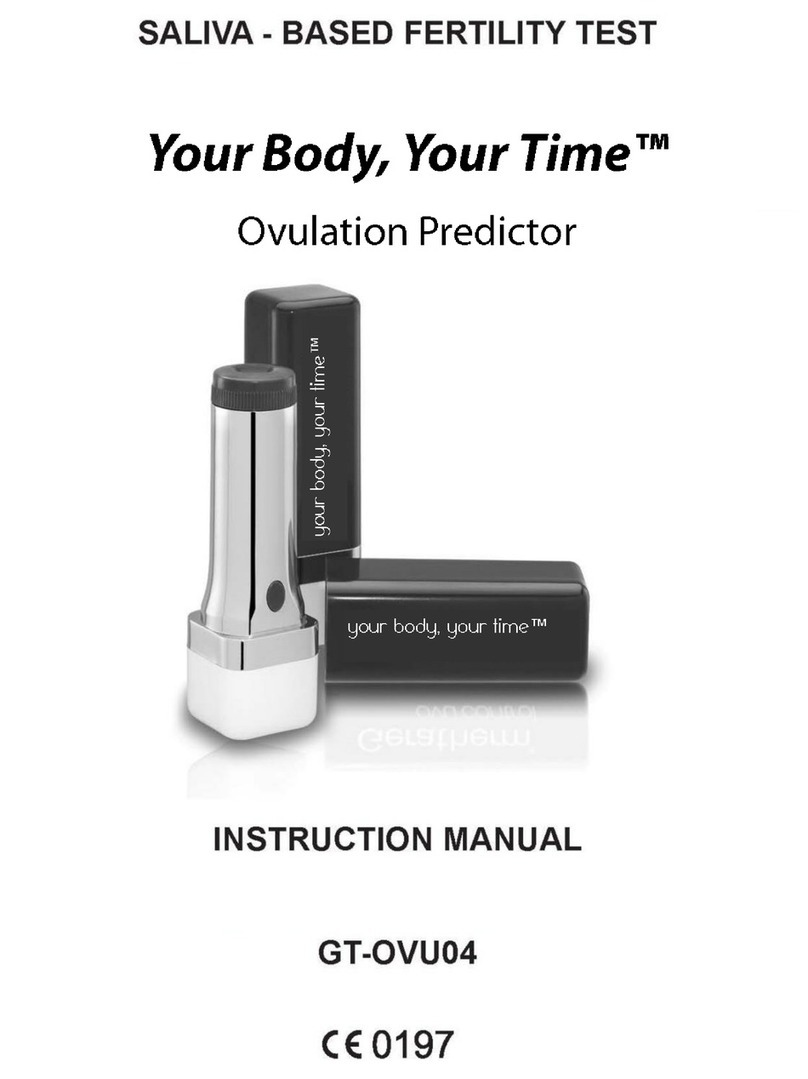
Your Body, Your Time
Your Body, Your Time GT-OVU04 instruction manual
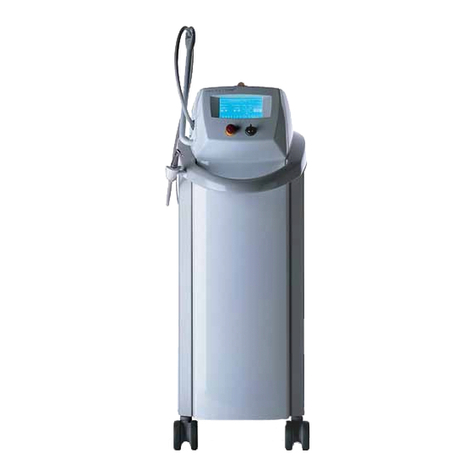
KaVo
KaVo KEY Laser III 1243 Instructions for use
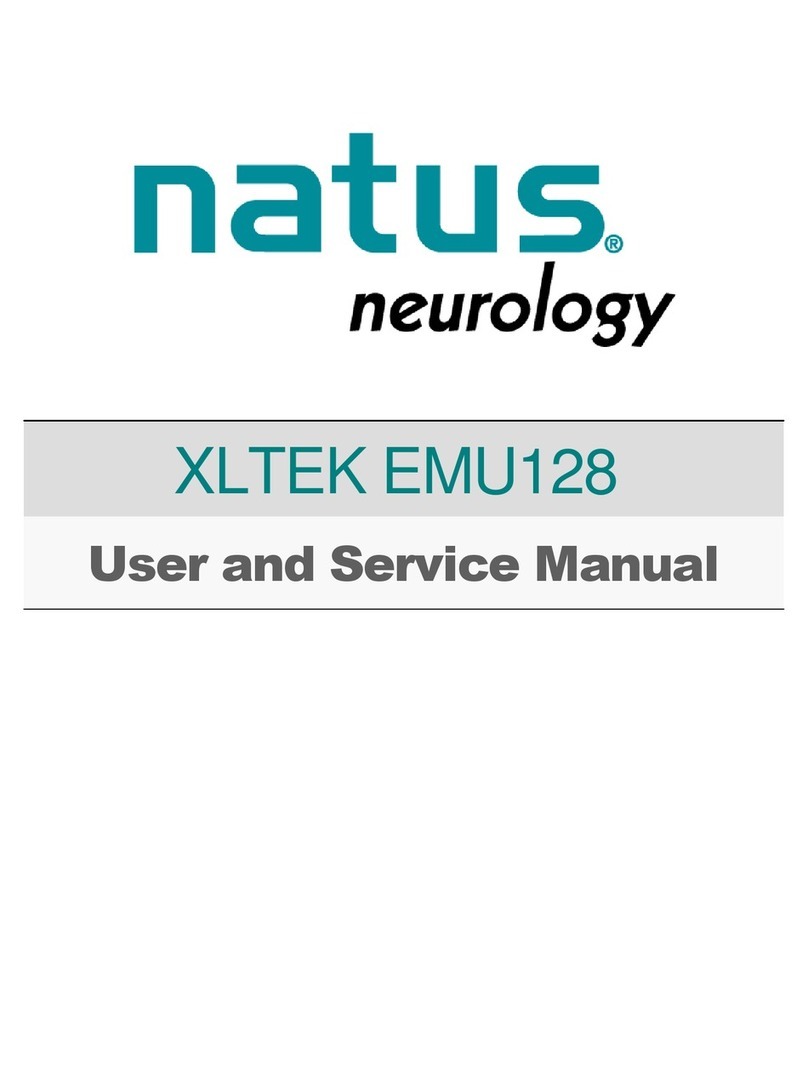
natus
natus XLTEK EMU128 User and service manual
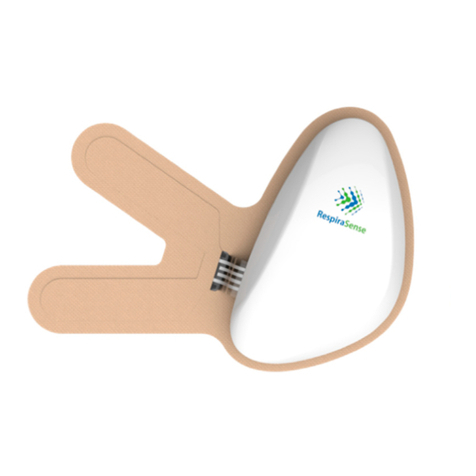
PMD
PMD RespiraSense RS Device Instructions for use

Belluscura
Belluscura X-PLOR Cartridge Replacement Instructions

